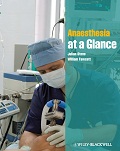A 21-year-old woman is undergoing an elective diagnostic laparoscopy. There is an acute drop in blood pressure, end tidal CO2 and oxygen saturation, and a tachycardia.
-
1. What is the differential diagnosis?
Show Answer
Correct answer: This would include:
- gas embolism;
- pulmonary embolism;
- anaphylaxis;
- excess intra-abdominal pressure from laparoscopy gas insufflation.
-
2. If gas embolism is suspected, what immediate steps should be taken?
Show Answer
Correct answer:
- Inform the surgeon and stop surgery.
- Call for help.
- Assess ventilation and circulatory status (specifically pulse and blood pressure)
-
start CPR if needed and give 100% oxygen. Give a vasopressor if significant hypotension (e.g. adrenaline).
- Auscultate heart to assess for possibility of mill wheel murmur.
- Turn patient onto her left side and Trendelenburg position (head down).
- Insert a central venous catheter into the right internal jugular vein to attempt gas aspiration from the right ventricle.
-
3. What effect will the use of nitrous oxide have on gas embolism?
Show Answer
Correct answer: Nitrous oxide rapidly enters gas-filled spaces and will exacerbate the situation. It must be stopped immediately if gas embolism is suspected.
-
4. What is the effect of excess intraperitoneal gas pressure?
Show Answer
Correct answer:
- a reduction in FRC;
- increased airway pressure;
- impaired venous return, causing hypotension.
-
5. What are the causes of a loss of a capnograph trace?
Show Answer
Correct answer:
- This can be due to failure to detect exhaled gas, e.g. dislodgement of an ETT or LMA, or disconnection of the breathing circuit.
- Apnoea from any cause in a spontaneously breathing patient, e.g. due to opiates.
- Complete airway obstruction.
- Acute severe bronchospasm or laryngospasm.

